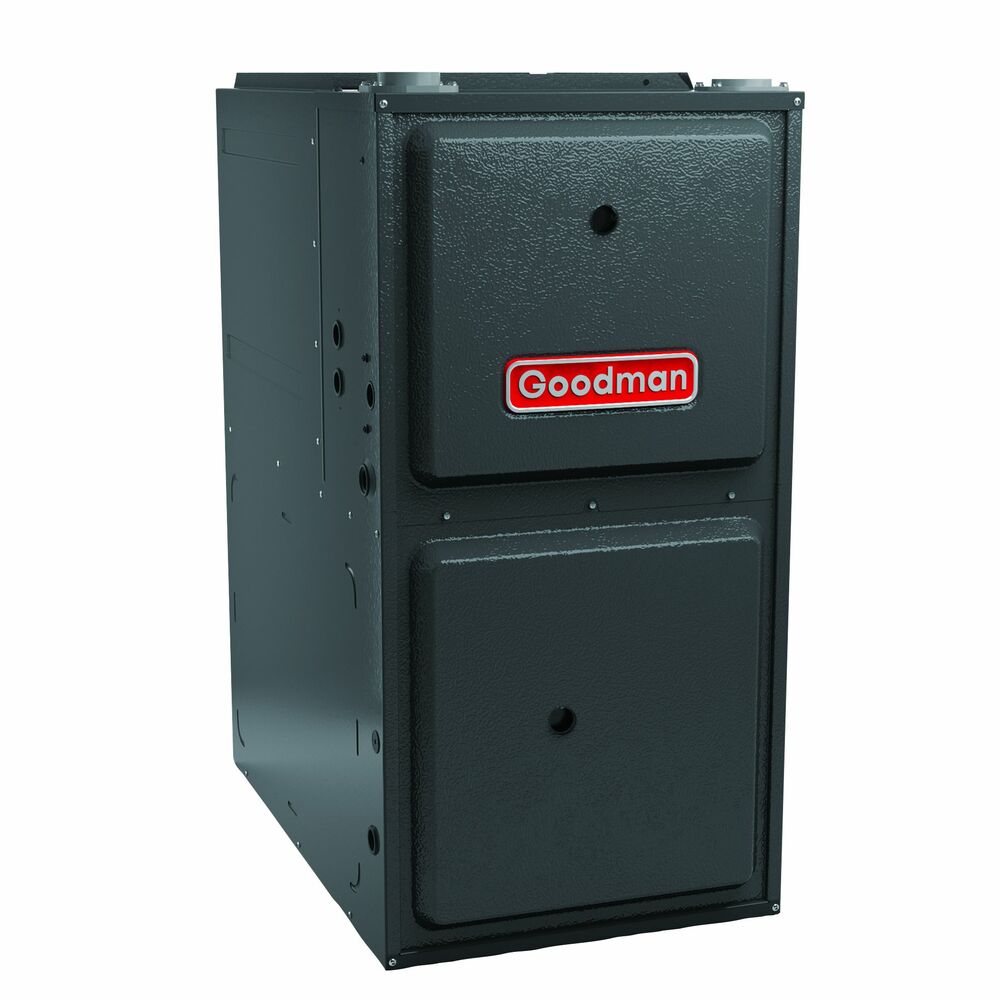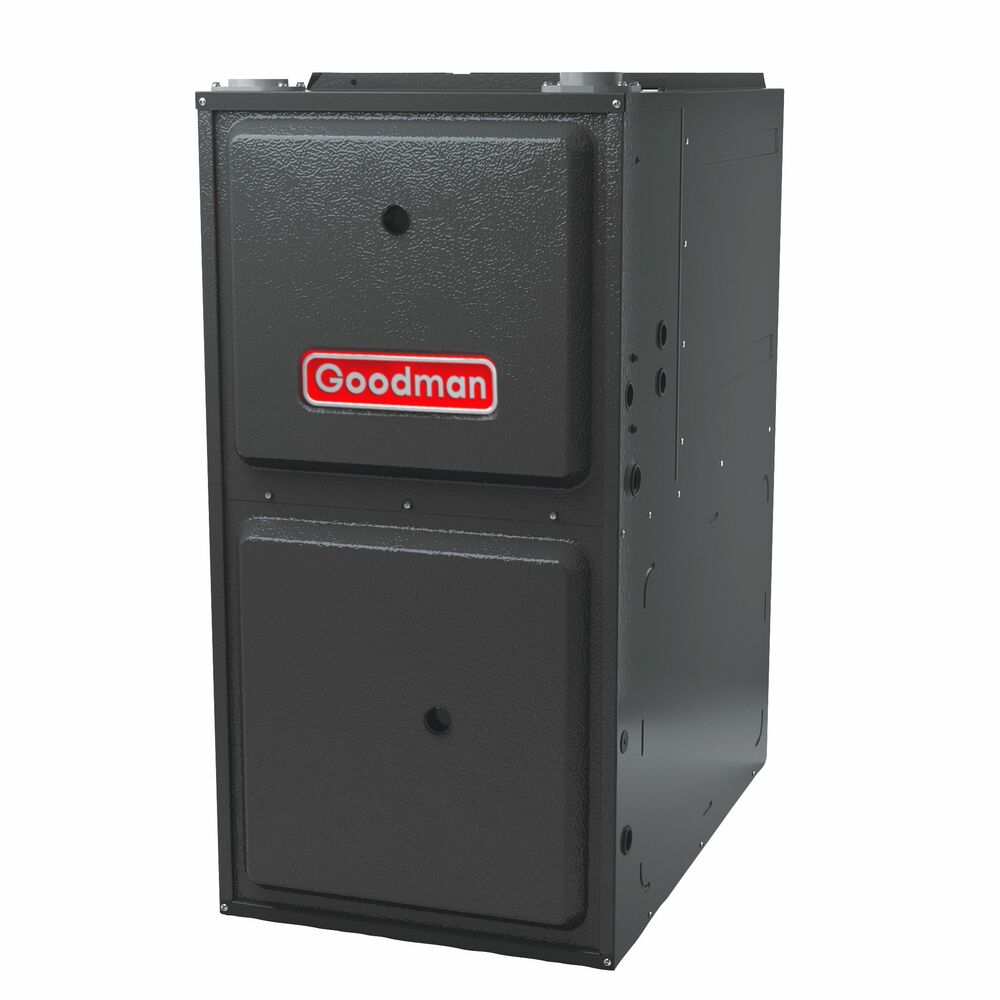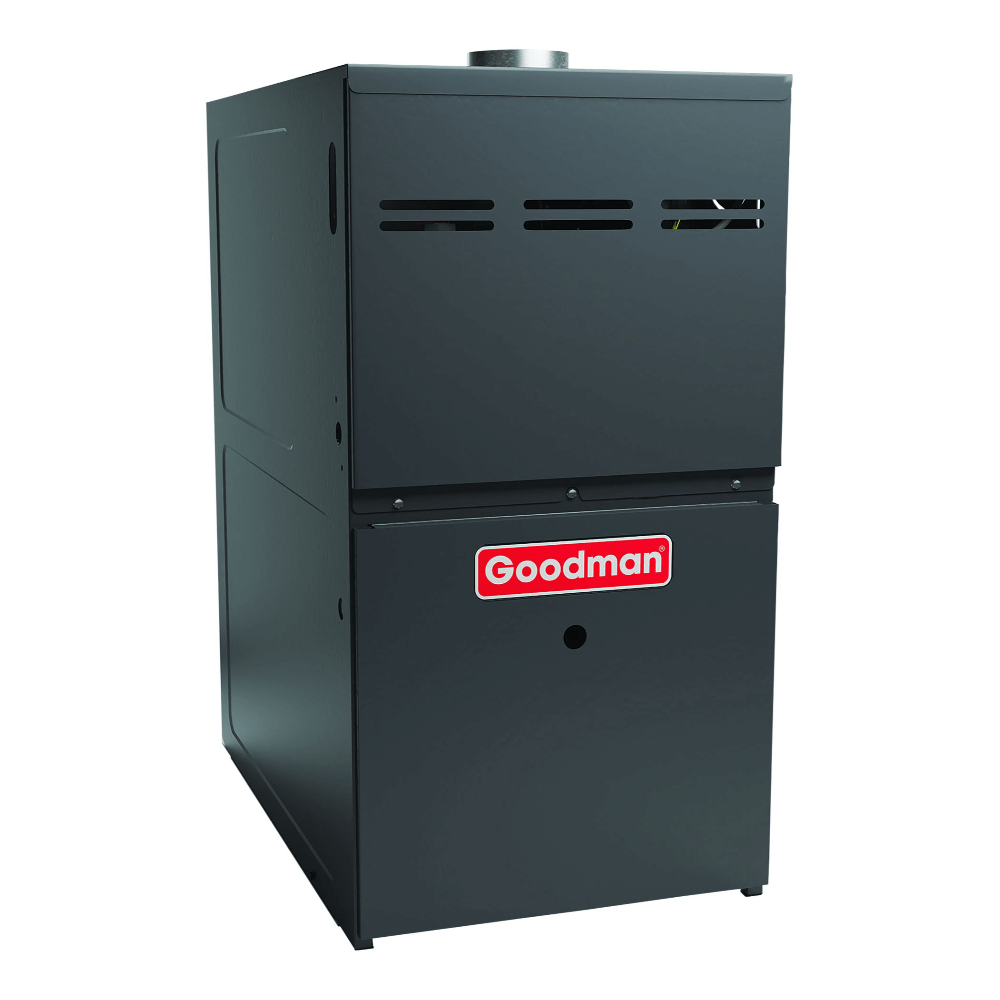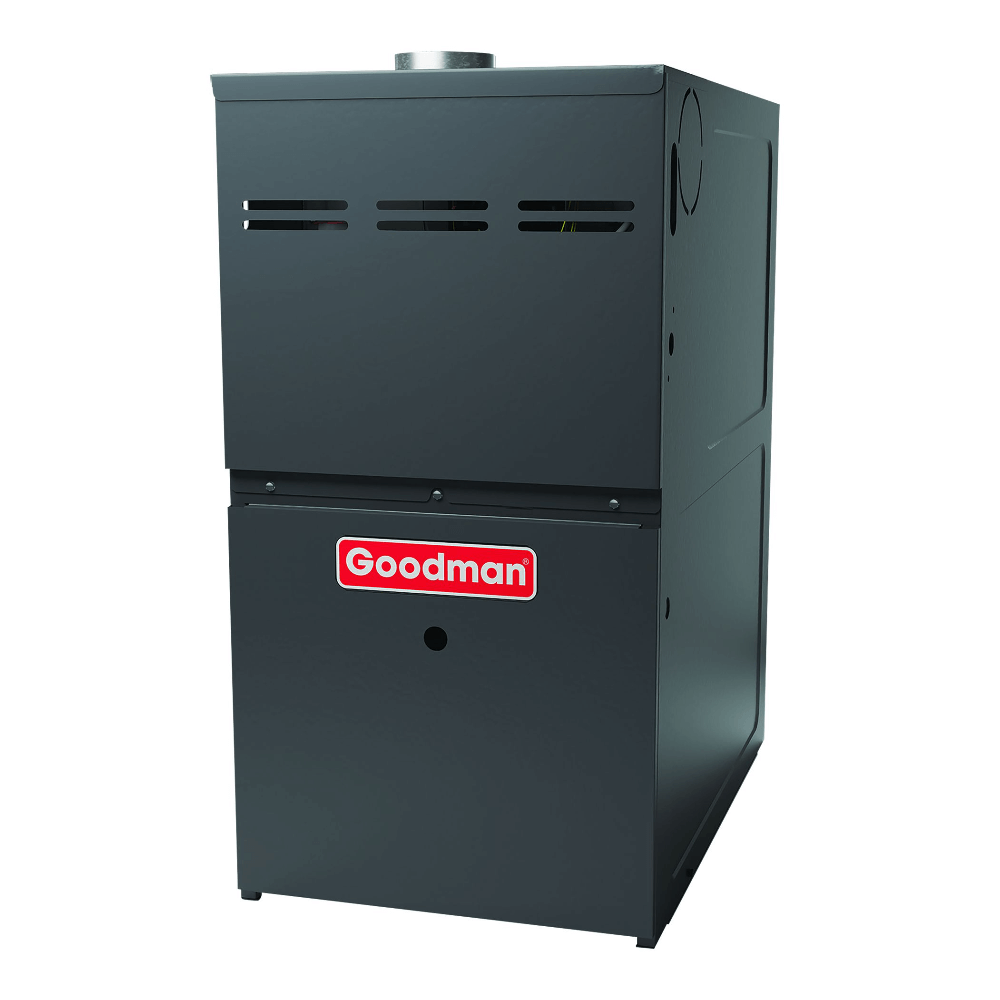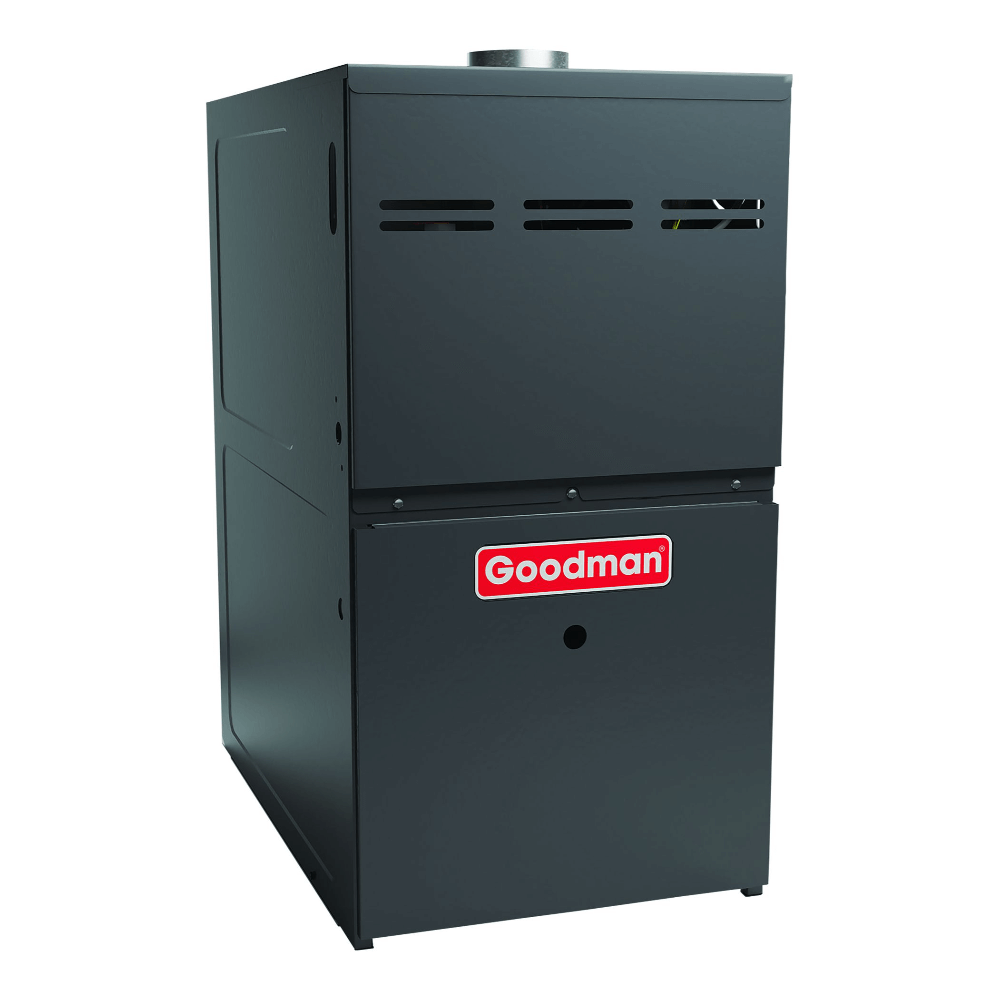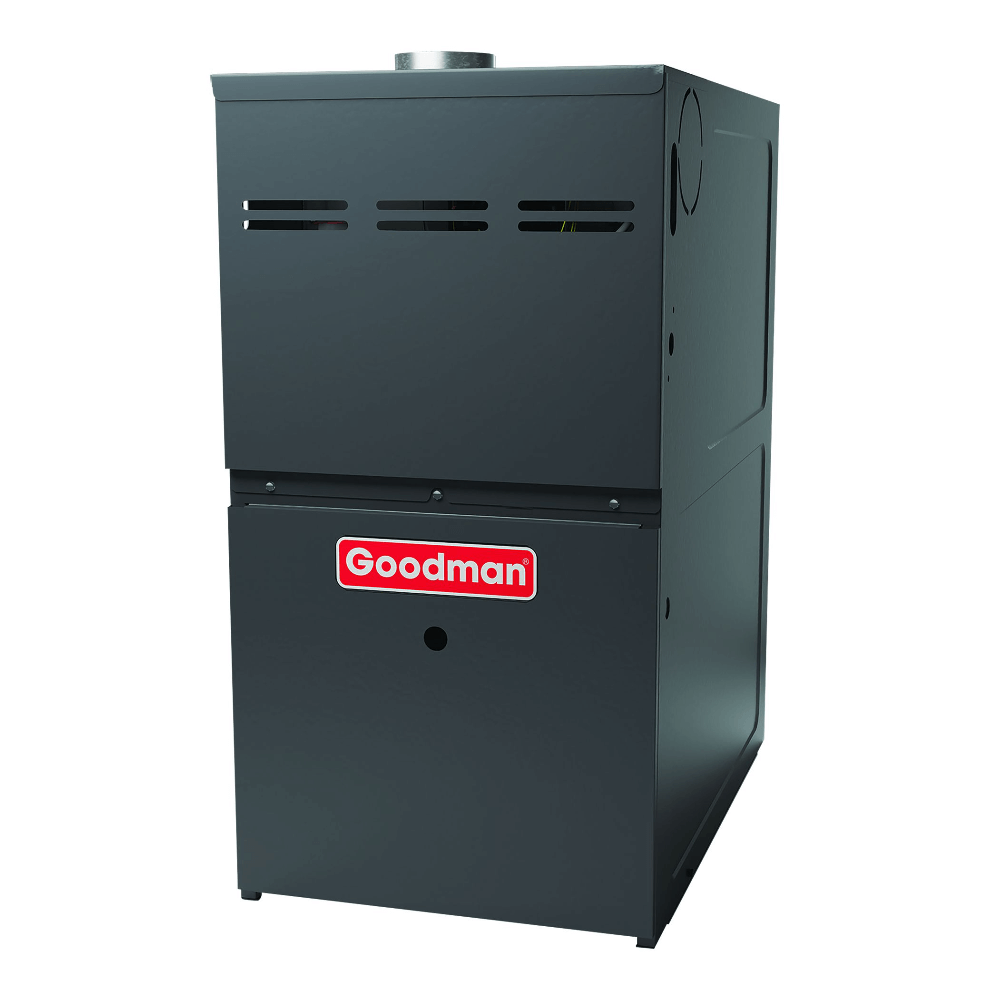The most important question to answer before shopping for a new furnace is, “What size furnace do I need?” Furnaces come in various models, stages, and efficiencies, but furnace size is critical to maintaining your home’s comfort throughout the winter and prolonging your furnace’s life. A furnace that is too big for your home is just as bad as a furnace that is too small.
Your home’s square footage is the most significant factor in determining your furnace’s size, and your climate zone is another important consideration. Taken together, square footage and climate zone provide a range of potential furnace sizes. Other factors, such as home style and sun exposure, narrow the scope. With an understanding of the essential factors and simple calculations, you’ll be able to estimate your ideal furnace size.

Find the Ideal Furnace for Your Home: View Our Products
What Size Furnace Do I Need?
When referring to furnace size, we usually talk about heating capacity rather than dimensions. Many factors are considered to estimate the heating capacity a furnace needs to heat your home adequately:
- The home’s square footage
- Climate zone
- Furnace efficiency
- Windows, sun exposure, ceiling height, and other factors
Understand Heating Capacity
Furnace size refers to its heating capacity, the amount of heat it can produce in one hour. Heating capacity is measured in BTUs. What does BTU stand for? BTU stands for British thermal units. BTUs are a unit of measurement for energy. Furnaces with higher BTUs produce more heat than furnaces with lower BTUs.
Calculate the square footage of your home.
The size of your home, and its square footage, is the first factor to consider when determining your ideal furnace size. Square footage might be found on closing, lease, or listing documents, blueprints, or appraisals. You can also calculate the house’s square footage by measuring the length and width of each room, multiplying the dimensions to obtain each room’s square footage, and adding up the square footage of each room.
The square footage provides you with a range of BTUs. Other factors, such as climate, must be considered to narrow the field.
| Square Footage | Zone 1 Furnace Size | Zone 2 Furnace Size | Zone 3 Furnace Size | Zone 4 Furnace Size | Zone 5 Furnace Size |
|
1,000 |
30,000-35,000 BTUs |
35,000-40,000 BTUs |
40,000-45000 BTUs |
45,000-50,000 BTUs |
50,000-60,000 BTUs |
|
1,200 |
36,000-42,000 BTUs |
42,000-48,000 BTUs |
48,000-54,000 BTUs |
54,000-60,000 BTUs |
60,000-72,000 BTUs |
|
1,500 |
45,000-52,500 BTUs |
52,500-60,000 BTUs |
60,000-67,500 BTUs |
67,500-75,000 BTUs |
75,000-90,000 BTUs |
|
1,800 |
54,000-63,000 BTUs |
63,000-72,000 BTUs |
72,000-81,000 BTUs |
81,000-90,000 BTUs |
90,000-108,000 BTUs |
|
2,000 |
60,000-70,000 BTUs |
70,000-80,000 BTUs |
80,000-90,000 BTUs |
90,000-100,000 BTUs |
100,000-120,000 BTUs |
|
2,200 |
66,000-77,000 BTUs |
77,000-88,000 BTUs |
88,000-99,000 BTUs |
99,000-110,000 BTUs |
110,000-132,000 BTUs |
|
2,500 |
75,000-87,500 BTUs |
87,500-100,000 BTUs |
100,000-112,500 BTUs |
112,500-125,000 BTUs |
125,000-150,000 BTUs |
|
2,800 |
84,000-98,000 BTUs |
98,000-112,000 BTUs |
112,000-126,000 BTUs |
126,000-140,000 BTUs |
140,000-168,000 BTUs |
|
3,000 |
90,000-105,000 BTUs |
105,000-120,000 BTUs |
120,000-135,000 BTUs |
135,000-150,000 BTUs |
150,000-180,000 BTUs |
Determine which climate zone you live in.
Your climate zone is the second factor that determines your ideal furnace size. Homes in colder regions of the country require more heating power than homes in warmer areas. There are five climate heating zones in the U.S. Zone 1 is the warmest, and Zone 5 is the coldest.
-
Zone 1: Desert and subtropical climates, including Texas and Florida
- Climate zone heating factor: 30 to 35 BTUs per square foot
-
Zone 2: Mediterranean climate, Including California and Tennessee
- Climate zone heating factor: 35 to 40 BTUs per square foot
-
Zone 3: Oceanic and humid-continental climates, including Missouri and Virginia
- Climate zone heating factor: 40 to 45 BTUs per square foot
-
Zone 4: Semi-arid and humid continental climates, including Nebraska and northern Ohio
- Climate zone heating factor: 45 to 50 BTUs per square foot
-
Zone 5: Alpine and humid-continental climates, including Montana and Maine
- Climate zone heating factor: 50 to 60 BTUs per square foot
A third factor to consider is furnace efficiency. A furnace’s AFUE (annual fuel utilization efficiency) rating reflects how efficiently it converts the fuel’s energy into heat. For example, a furnace with an 80% AFUE rating converts 80% of its energy to heat. Higher ratings are more efficient than lower ratings.
When considered together, the AFUE rating and the heating capacity provide a furnace’s actual heat output. To calculate the actual output, multiply the AFUE rating by the heating capacity.
80% AFUE x 100,000 BTUs = 80,000 BTUs output
93% AFUE x 100,000 BTUs = 90,000 BTUs output
This calculation will prevent you from purchasing a too-small furnace for your house. For example, a 1,500-square-foot home in Zone 5 requires approximately 90,000 BTUs. A 100,000 BTU furnace with 80% AFUE would be insufficient because the actual heat output is only 80,000 BTUs. A 100,000 BTU furnace with 93% AFUE would provide 90,000 BTUs.
Consider the furnace efficiency (AFUE).
Other important factors to consider.
While square footage, climate zone, and efficiency are the most significant factors determining furnace size, additional factors will help you narrow your choices.
Windows and Doors
Heat escapes through windows and doors. Choose a furnace at the upper end of the size range if you have old, leaky windows, many windows, or many doors that lead outside.
Sun Exposure
Sunlight warms homes. Reduce your furnace capacity by 10% if your home receives a lot of sun exposure, and increase your furnace capacity by 10% if your home is mostly shaded.
Ceiling Height
Houses with high ceilings have more space to heat. Choose a larger furnace if vaulted or cathedral ceilings are more elevated than the standard eight or nine feet.
Color of Your Roof
Darker colors absorb more heat from the sun. Pick a smaller furnace if you have a black, dark brown, or dark gray roof.
Home Style, Layout, and Orientation
Homes that are long and narrow with more exterior walls lose more heat and require more BTUs than similar-sized houses that are square. Two-story houses retain heat better and need fewer BTUs than single-story houses because the second floor insulates the home.
Insulation
Insulation helps a house retain heat. Well-insulated, newer houses require smaller furnaces than older homes with shoddy insulation.

Find the Ideal Furnace for Your Home: View Our Products
Estimating the Furnace Size You Need
Estimate your furnace size using your square footage and climate zone. Multiply your square footage by the climate zone heating factor in the chart above. Choose a number at the upper or lower end of the climate zone range based on factors such as sun exposure, roof color, and insulation quality. For example, choose the higher number if your home is well-insulated, exposed to full sunlight, or has a dark roof. If your home has many old windows, high ceilings, or is shaded, choose the lower number.
Let’s estimate the furnace size for a 2,000-square-foot, two-story house in northern Indiana (Zone 4) that receives full sun, has a dark roof, and is well-insulated. The climate zone heating factor ranges from 45 to 50 BTUs. We’ll choose 45 BTUs based on the information given.
2,000 square feet x 45 BTUs = 90,000 BTUs
We now know the house requires 90,000 BTUs of heat. But we can’t install a 90,000 BTU furnace without calculating its actual heat output. To do that, we must consider the furnace’s efficiency or AFUE rating. Let’s say we find a 90,000 BTU furnace with 95% AFUE.
90,000 BTUs x 0.95 = 85,500 BTUs
The calculation above tells us that a 90,000 BTU furnace with 95% AFUE would be insufficient. However, a larger 100,000 BTU furnace with a lower AFUE rating of 90% would provide enough heat.
100,000 BTUs x 0.9 = 90,000 BTUs
Furnace Size Matters
Bigger isn’t always better when it comes to furnaces. The same could be said for smaller furnaces. A critical aspect of furnace performance is the correct sizing. A furnace that is oversized or undersized for the house’s square footage won’t perform as it should.
Oversized Furnaces
Oversized furnaces are prone to short cycling. They quickly reach the thermostat’s setting and shut off, resulting in an abnormally short heating cycle. Each time the temperature dips below the setting, they run a short cycle repeatedly. Short-cycling strains the entire HVAC system, leads to costly repairs and shortens the system’s lifespan. This operation is also inefficient, resulting in high energy bills and uneven heating throughout the home.
Undersized Furnaces
Undersized furnaces struggle to meet the house’s heating demands. They run long, frequent cycles to maintain the home’s temperature. Overworked furnaces break down more frequently and wear out sooner. Undersized furnaces are inefficient, yield higher energy bills, and heat homes unevenly.
Manual J Load Calculation
The Manual J or HVAC load calculation is a formula used by HVAC professionals and contractors to determine the required sizes of HVAC equipment. The installer or contractor takes measurements, performs tests, and considers factors such as the number of windows, doors, and residents. The installer plugs the information into manual calculations and software to determine the ideal sizes for the HVAC equipment. Many professionals use Manual J calculators to reach estimations because of the complexity of the process.
Conclusion
Your furnace size is essential knowledge when shopping for a new furnace. Estimate your furnace size before debating about different models or efficiencies. An appropriately sized furnace guarantees your home’s comfort and extends your furnace's lifespan.
Contractors and HVAC professionals use Manual J calculations to determine furnace size, but a homeowner can formulate a reasonable estimate using square footage, climate zone, furnace efficiency, and other factors. Consult an HVAC professional to guarantee your assessment is accurate and to avoid the pitfalls of an incorrectly sized furnace.
Frequently Asked Questions
Does furnace size affect air conditioning?
Your furnace’s size can affect your air conditioner’s performance, so both units must be correctly sized and matched. While they perform different jobs and work independently, a furnace and an air conditioner utilize some of the same HVAC system components.
For example, the furnace fan blows hot air through the ducts and vents when the furnace runs and cold air when the air conditioner is on. If an overworked fan ceases operation due to strain from an undersized furnace, the air conditioner’s cold air can’t blow through the system.
What is the average size of a furnace?
Most furnaces fall in the 80,000 to 100,000 BTUs range. Standard furnace sizes are 80,000 BTUs, 100,000 BTUs, and 120,000 BTUs. Furnace size ranges from 40,000 BTUs to over 200,000 BTUs and is in 20,000 increments.
What size furnace for 1500 square feet?
A 1,500-square-foot house requires 45,000 to 90,000 BTUs depending on the climate zone:
- Zone 1: 45,000 to 52,500 BTUs
- Zone 2: 52,500 to 60,000 BTUs
- Zone 3: 60,000 to 67,500 BTUs
- Zone 4: 67,500 to 75,000 BTUs
- Zone 5: 75,000 to 90,000 BTUs
Factors such as the quality and number of windows and doors; sun exposure; ceiling height; roof color; home style, layout, and orientation; and insulation quality determine whether you require a furnace at the bottom or top of the range.
What size furnace for 1600 square feet?
A 1,600-square-foot house requires 48,000 to 96,000 BTUs depending on the climate zone:
- Zone 1: 48,000 to 56,000
- Zone 2: 56,000 to 64,000
- Zone 3: 64,000 to 72,000
- Zone 4: 72,000 to 80,000
- Zone 5: 80,000 to 96,000
Factors such as the quality and number of windows and doors; sun exposure; ceiling height; roof color; home style, layout, and orientation; and insulation quality determine whether you require a furnace at the bottom or top of the range.
What size furnace for 2000 square feet?
A 2000-square-foot house requires 60,000 to 120,000 BTUs depending on the climate zone:
- Zone 1: 60,000 to 70,000
- Zone 2: 70,000 to 80,000
- Zone 3: 80,000 to 90,000
- Zone 4: 90,000 to 100,000
- Zone 5: 100,000 to 120,000
Factors such as the quality and number of windows and doors; sun exposure; ceiling height; roof color; home style, layout, and orientation; and insulation quality determine whether you require a furnace at the bottom or top of the range.


